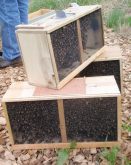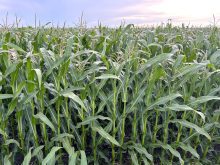Colombia plans to nearly double agricultural land growing crops for food and biofuel, part of a new investment boom in the country as violence ebbs from a decades-long internal conflict fuelled by drug profits.
The idea is to transform the vast eastern plains, dotted for years with illicit coca plantations, into the country s bread basket and provide domestic food security in the face of soaring global food prices.
Colombia has 53 million acres that could be planted with crops such as corn, soy, African palm and sugar, and less than a quarter of that land is currently being used for farming.
Read Also

Canola’s clubroot success story
At one time, scientists, agronomists and growers were extremely worried clubroot would spread across the Prairies and devastate Canada’s canola industry.
Already the world s top grower of high-quality washed arabica coffee and mostly self sufficient in food production, Colombia imports more than three million tonnes of corn each year for animal feed. The government wants to cut those imports in half.
There are 10 million acres perfect for conversion to farmland in the eastern plains, a region known as the Orinoquia, according to Agriculture Minister Juan Camilo Restrepo. In the next four years, the government wants to plant a quarter of that, spending up to $5 billion, with hopes the private sector will invest even more. The region has acidic soils similar to those of Brazil s central savanna, which was converted into vast fertile soy plots with heavy investments in lime and fertilizers. Such techniques concern environmentalists, but Colombian agronomists are eager to learn from Brazilian experts. Since 1991, Brazil s national production of grains nearly tripled while planted area only increased about 30 per cent.
But there are several challenges. Large swaths of the Andean nation were off limits for years as drug runners, leftist guerrillas and right-wing paramilitary groups battled over territory, although coca plantings are down sharply as a result of a U.S.-backed crackdown. Violence remains a problem, and a legacy of the conflict is poor infrastructure. Also, torrential rains and flooding have battered the country for months, damaging roads that must be fixed before new ones can be built.
Another related hurdle is land rights. Some 10 million acres were taken from peasants by heavily armed paramilitaries, drug lords and ranchers, but many expect people forced off land will be too scared to return and will likely sell to big farm companies.














